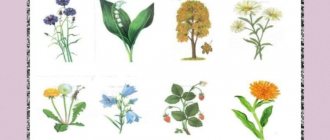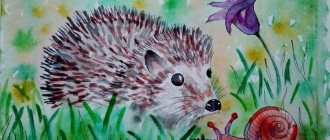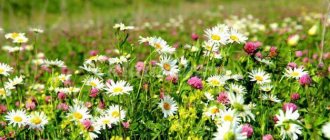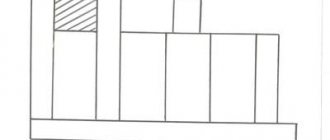Project in the middle group on the topic: “Houseplants are our friends”
Transcript
1 BDOU in Omsk “Kindergarten 247 combined type” Project in the middle group on the topic: “Indoor plants are our friends” Authors: Senetskaya A.V. Valitova R.T. Omsk 2014
2 Project type: research, short-term (2 weeks), group. Project participants: children, teachers, parents. Relevance: In our age of technical education, the problem of reducing cognitive interest, love and respect for living nature has become acute. Adults, and especially children, looking at their parents, are completely immersed in the virtual life of computers and other gadgets. In the conditions of city life, we have completely stopped noticing the beauty, kindness and gifts of the nature around us. Children now, from a very early age, are beginning to have a remarkable understanding of phones, computers and other consoles; they have completely taken over their sphere of interests. The world around them no longer arouses such interest in them as before. Our group conducted a survey among children and their parents, which revealed that most 4-5 year old children do not know whether they have indoor plants at home, they simply do not notice them, children do not know why indoor plants are needed, they do not know how to care for them and are not interested in them. The children have insufficiently developed labor skills and abilities to care for indoor plants, and lack knowledge about indoor plants. But it is so important to form in the younger generation a sense of beauty, responsibility for someone or something, teach them to work and enjoy it. Expected results: 1. Expansion of knowledge on environmental culture of students. 2. Development in children of a sustainable interest in representatives of the plant world and indoor flowers. 3. Development of research activities of preschoolers in the course of joint practical activities. Educational areas: artistic-aesthetic, communicative-personal, cognitive-speech development. Purpose: Educational: to help expand children's knowledge about indoor plants and their significance; develop practical skills in caring for indoor plants.
3 Educational: fostering a love of nature, observation and respect for plants; promote the development of environmental culture. Material: Improving the ecological environment in the group, combining the efforts of the teacher, children, parents aimed at improving and greening the group. Objectives: 1. Increase the level of environmental culture and knowledge on the topic “Houseplants”. 2. Involve parents in this problem. 3. Learn to compare plants, find similarities and differences in external characteristics (indoor plants and plants growing outside). 4. Develop interest in the development and growth of plants, curiosity and observation. 5. Develop skills and abilities to care for indoor plants. Material: slides or photographs “Room without indoor plants”, “Room with indoor plants”; indoor plants, a scoop, watering cans with water, wooden sticks for loosening; dust removal wipes; game (cards) “What do plants need to grow”; “Find a plant by name”, “Unusual flowers”. STAGES OF PROJECT IMPLEMENTATION: Stage 1. Preparatory Collection of information on the topic “Indoor flowers”; making cards for games; selection of illustrations; production of a passport for indoor plants; preparing conversations with children; development of notes for nodes. Involvement of parents: communication about the project, request to help children find information. Stage 2. Main Work with parents - helping children find information about indoor plants in the house; -photo of a child with an indoor flower; - writing a story about your (home) indoor flower;
4 Conversations with children: Educational conversations: “The history of houseplants”, “Are houseplants friends or enemies?”; “Structure of a houseplant”; “Plants in our lives”; “Help the plants”; “Tell Dunno about indoor plants”; "Care for indoor plants." Conversations discussion: “What do plants need to live?”; “How to water indoor plants?”; “How do children and their parents take care of indoor plants?”; “On what occasions are flowers given?” Solving problem situations: “If you don’t water the flowers for a long time, the leaves fade and the flowers fall”; “If a flower is left without light, in the dark, what will happen?”; “Can a plant breathe?” Cognitive activity: GCD: “Houseplants are our friends”; "Flowering Plants"; “I’m learning to care for a houseplant,” “Our new green friend.” Game activity: Didactic games: “What has changed?”, “Nai di the same”, “Guess the plant by description”, “Describe, I will guess”, “What is missing?”, “Nai di plant by name”, “What first, what then?”, “Unusual flowers”, “Flower shop”. Role-playing games: “Florist”; "Birthday"; "Flower shop"; "Family". Communication: Learning and reading a poem about plants; reading popular science and fiction literature on the topic; discussion of proverbs, sayings, guessing riddles; looking at illustrations, postcards depicting indoor plants. writing descriptive stories. Music: Development of positive emotions; listening to the musical work “P.I. Chai kovsky": "Waltz of the Flowers" and "Seasons".
5 Outdoor games: “Collect a flower from petals”; “Deck the carpet with flowers”, “Gardener”. Breathing exercises: “Let’s blow on a flower,” “Let’s warm the flower with our breath.” Labor: Work in a “nature corner” to care for indoor plants. Artistic creativity: Drawing on the theme “Indoor Flowers”, coloring coloring books on the topic, drawing “Violet in a Pot”, modeling “Beautiful Flower”, plasticine painting “Indoor Flower”, drawing with paints, pencils, crayons on indoor plants, applique “Cactus”, collective work in mixed media “I love the flowers in the room, just as you love them.” Excursions to corners of nature in other groups, around the kindergarten. Replenishment of the development environment: - replenishment of the corner of nature with the necessary equipment (watering cans, rags, basins and buckets, aprons); equipping the ecological zone in the group with new plants; production of a “Passport for indoor plants”; a series of experiments to identify the needs of plants for moisture, heat, light; cards for caring for a houseplant; illustrations; card index of didactic games for getting to know indoor plants. -Photo report (slide film) -Screen folders on the topic. -Exhibition of works stage 3. Final
MAGAZINE Preschooler.RF
Summary of a lesson in the middle group on familiarization with nature “The World of Indoor Plants.”Authors:
- Botkova Larisa Aleksandrovna, teacher of the highest qualification category
- Petrova Olesya Aleksandrovna, teacher of the 1st qualification category
- Rudneva Olga Nikolaevna, teacher of the 1st qualification category
MBDOU kindergarten 40 Kiselevsk, Kemerovo region
Educational field: “Cognitive development”
Integration of areas: “Social and communicative development” , “Speech development” .
Goal: expanding children's understanding of indoor plants, their benefits and structure.
Tasks:
- Expand children's knowledge about indoor plants, reinforce the idea that a plant is a living being. Introduce children to a new indoor plant - geranium, noting its characteristic features. Strengthen the ability to recognize familiar plants, name their parts (root, stem, leaf, flower), using models.
- Replenish and activate children's vocabulary based on in-depth knowledge. Expand vocabulary: geranium, dry and wet soil, moisture.
- Foster interest in research activities; teach you to think and draw conclusions. Encourage the desire to care for indoor plants, treat them with love and tenderness.
Progress:
Educator.
Children enter the group, the teacher reads a poem:
Let's walk slowly through the garden And say hello to every flower. I have to bend over the flowers, not to pick or cut them,
And in order to see their kind faces and show them a kind face.
Guys, now we will remember what you talked about with Nina Petrovna at the last meeting...
Watch the video clip “Plants are our friends” .
Educator.
- Guys, what do you think, who cleans the air from dust and dirt in our group room?
Children's answer: indoor plants (Music plays and slide 1 appears on the screen - “A flower blooms” ).
Educator. Right! In a group, in a house, in living spaces, indoor plants purify the air.
-Why are these plants called indoor plants?
(Because they grow in rooms, living spaces.)
- Why do we need indoor plants?
(For beauty, they create coziness in our home. A person decorates his home with indoor plants).
Educator.
- Guys, you know, today I came into our group and saw this flower on the window. Who do you think could have given it to us? (children's answers)
— And Vesna gave it to our Teremok and asked us to take care of it and look after it. And then it will bring us a lot of joy. Guys, what time of year is it now? In spring, nature comes to life, and so do our indoor plants after their winter rest.
- Guys, do you know the name of this houseplant? (No.)
Educator. This indoor plant is called “Geranium” (Slide 2 – geranium), or pelargonium. It is also called “Crane Nose” because the column of the flower sometimes grows into a long “beak” , very similar to the beak of a crane. Now it will be easier for you to remember the name of this plant. Let's take a closer look at it. What does geranium have? (Slide 3. “Structure of geranium” )
Children's answers: root, leaves, stem, flowers (if the plant blooms).
Educator (summarizes the children’s answers) - That’s right, geraniums have a stem, leaves, and roots (flowers).
Educator. What shape are geranium leaves? What color are the leaves? (Children's answers).
Teacher (summarizes the children’s answers). – Geranium leaves are round in shape, bright green in color, the leaf can also have a brown circle at the edge or with a white border.
-What color are geranium flowers? (Children's answers).
Educator:
– Geranium flowers can be of different colors: white, pink, red, crimson. Flowers are collected in inflorescences, like umbrellas. (Slide 4)
Educator:
– Where are the roots of geranium? Why do you think a plant needs roots? (Children's answers).
Teacher (summarizes the children’s answers)
-The roots of the plant are in the ground. Due to the root, the plant does not fall and stays firmly in the ground. The root also feeds the plant. When we water the soil in a pot, the root absorbs water, and it rises up the stem to the leaves and flowers (Accompany the story with a demonstration). To prevent the plant from withering, it needs to be watered.
- So we met a new plant.
Educator:
– Guys, tell me what you remember about geranium. (Children's answers).
— Guys, tell me, where are the indoor plants in our group?
In a corner of nature.
Educator:
-Let's introduce geranium to our plants in a corner of nature. In the meantime, our flowers greet each other, I invite you to the “Flowers” .
I ask you, flower: Pick up your leaf, go out onto the path, and stamp your foot.
Shake your head and greet the sun in the morning. Tilt the stem slightly - Here is a charger for the flower.
Now wash yourself with dew, shake yourself off and calm down. Finally, everyone is ready to celebrate the Day in all its glory.
(Children perform movements in accordance with the text).
Educator:
– I invite the children to go to a corner of nature.
— Guys, look, our geranium has already made friends with plants in this corner of nature.
— What indoor plants are found in our corner of nature? (violet, balsam, aloe, pike tail...). Children talk about plants.
Educator.
-Guys, what does each plant have (root, stem, leaves)
— How do you think plants differ from each other? (shape of leaves, size, some have flowers, others don’t).
- Well done! And now we will play the game “Flower Structure” .
(The teacher gives the children cards with images of a root, stem, leaves, flower). Children take turns laying out cards on a flannelgraph and naming a part of the plant.
- Guys, try to guess my riddle:
“There are no arms, no legs, but it moves. There is no nose, but he breathes. There is no mouth, but he drinks and eats.” (Plant)
- That's right, it's a plant! How does a plant move since it has no legs? (grows, turns towards the light)
— How does a plant breathe? (through leaves, roots)
— How does the plant feed? Just like us? (roots)
— That’s right guys, it’s the roots that feed the plant.
—Where is the food for the plant stored? (in the ground, soil)
— Plants’ nutrition is contained in the soil in which they grow. And if you pull a plant out of the ground and leave it like that, it will die.
— Plants move, breathe, eat. This means that we can say about them that they are living beings just like you and me.
Educator:
— Now we are going to play the game “What do plants need to grow? ” (Slide 5).
- Let's choose from these drawings - diagrams only what is needed for the life of our plants.
-Watering can! That's right, we water the plants with a watering can.
- Sun! Without sunlight and heat, plants do not grow.
— Plants need earth, air, water. In order for plants to be beautiful, grow and bloom well, they need to be fed with special fertilizers. And they definitely need good care, our care and love. And they will thank us with clean air.
— We will talk about how to properly care for plants in the next lesson. And now I invite you to once again admire the plants in our corner of nature.
| Next > |






